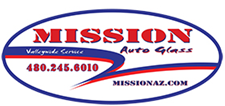Auto Glass Facts
Auto glass plays a major part in the design of modern vehicles. The glass in your vehicle acts as an important part of the design of the passenger compartment to withstand the crushing of the roof in a roll-over, and to manage energy transfer in less severe accidents.
The windshield is one of the primary safety components of vehicle design crash management, and it is utilized for passenger side air bag deployment. During an accident, a passenger-side air bag can blow an improperly installed windshield completely out of a vehicle.
A windshield that dislodges from the body of the vehicle will not provide the necessary support for the passenger compartment, nor allow the airbag to work properly.
The windshield is a major structural component of an automobile that must meet Federal crash and rollover standards. FMVSS
Types of Auto Glass
Tempered Glass
Tempered glass is a single layer of glass that is heat treated to increase impact resistance. It is heated to around 1100 Degrees (F) then rapidly cooled. It is made to size and shape, as it cannot be cut after manufacture.
Laminated Glass
Laminated glass consists of two panes of glass permanently bonded together with a tough interlayer of plastic under heat and pressure into a single piece.
Windshields are made up of two layers of tempered Glass and a central layer of Plastic. These are laminated together to form a visual and Structural unit in your car.
Tints and Colors
Tinting is done by adding metallic ingredients to the glass mixture during manufacturing. Depending on the ingredients used, the color and performance properties will be different. Tinted glass in vehicles are called variously, Solar, Privacy, and Shaded.
Safety
Safety Standards
All vehicles sold in the United States must meet or exceed the following Federal Motor Vehicle Safety Standards
Passenger Airbag Deployment
[FMVSS 49 CFR 571.208]
The airbag bounces off the windshield to absorb the initial deployment. This may shatter the windshield but as long as the windshield stays in place it is still serving its intended purpose.
Structural Strength
[FMVSS 49 CFR 571.216]
In an accident in which the vehicle rolls over, the strength of the front of the passenger compartment depends primarily upon the windshield. As much as 60% of roof strength is lost if the glass separates from the vehicle body resulting in a crushed roof.
Containment
[FMVSS 49 CFR 571.219]
If you are in a crash, it is important that debris from outside the vehicle not enter the passenger compartment and that passengers be kept inside the vehicle.
Older cars 1960's had windshields in rubber gaskets to hold them in place
Glossary
Adhesives
Compounds that are used to bond together different materials by surface attachment.
Bulletproof Glass
is actually plastic of varying densities and construction.
Encapsulated
Has the exterior molding applied to the glass and is bolted thru the body from the inside.
Fixed
Usually glued into the body and covered with trim on the outside of the body.
FMVSS
Federal Motor Vehicle Safety Standards
OEM
Original Equipment Manufacturer. This means that the glass meets the original specifications for safety and quality as the glass that it came with from the factory.
Privacy
Privacy Glass comes in a wide range of colors, depending on manufacturer and vehicle.
Shaded
Shading refers to the dark color band on the top of most windshields.






